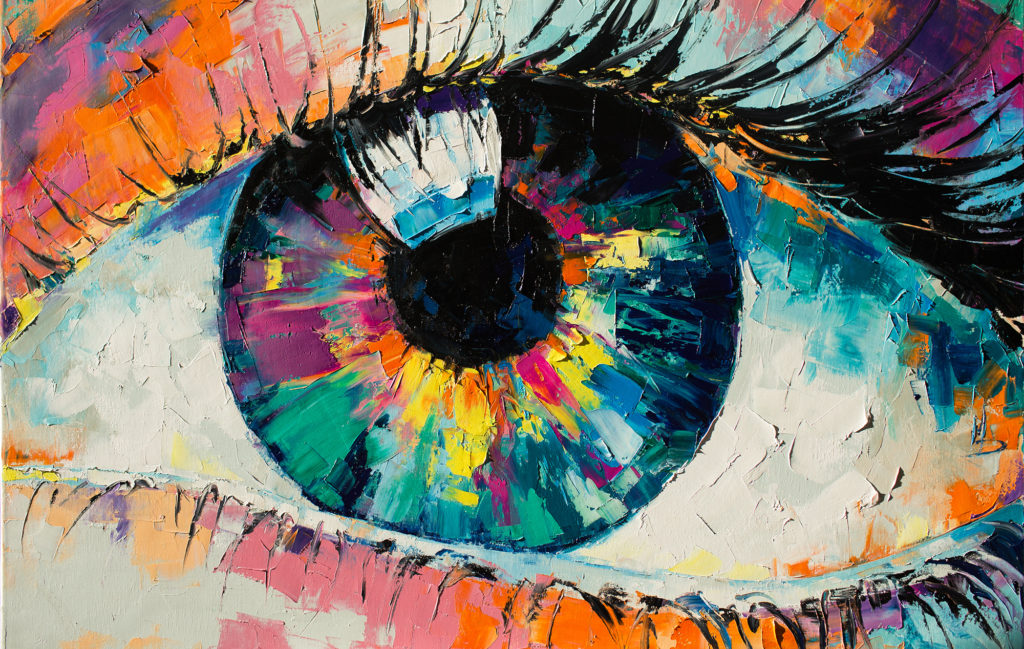The Development of Trump Art: From Early Critiques to Contemporary Viewpoints
The Development of Trump Art: From Early Critiques to Contemporary Viewpoints
Blog Article
Looking Into the Diverse World of Artistic Expression: From Surrealism to Abstract Realistic Look
In the realm of artistic expression, from the dreamlike landscapes of surrealism to the complex play of light and type in abstract realistic look, musicians have continually pressed the boundaries of creativity and creativity. Each motion holds a distinct lens where the globe is watched and interpreted, providing a peek right into the midsts of human emotion, understanding, and assumed. As we check out the multifaceted globe of art, we exist with a tapestry of designs, techniques, and approaches that challenge our understanding and provoke consideration. The trip with these diverse forms of creative expression promises to unwind a rich tapestry of visual narration and intellectual query that mesmerizes the mind and mixes the heart.
Surrealism: Letting Loose the Subconscious
Surrealism, a progressive imaginative motion of the 20th century, delved right into the depths of the subconscious, introducing a globe of dream-like images and non-traditional associations. Led by musicians like Salvador Dali, René Magritte, and Joan Miró, Surrealism sought to test the standard means of seeing and understanding art. With strategies such as automatism and dream evaluation, Surrealist musicians aimed to use the subconscious mind to reveal covert facts and needs.
Among the essential components of Surrealism was the emphasis on the unreasonable and the astonishing. By incorporating unanticipated elements in their jobs, Surrealist musicians intended to develop a feeling of disorientation and shock in the visitor. This disruption of logic and reason was indicated to provoke a deeper exploration of the subconscious and the enigmas of the human psyche.
Abstract Realism: Redefining Understanding
Challenging conventional creative limits, Abstract Realism redefines assumption through the blend of well-known aspects with abstract kinds. This innovative approach to art incorporates the representational precision of realism with the creative freedom of abstraction, using audiences a distinct visual experience that prompts them to examine their understanding of truth.
In Abstract Realism, artists strive to catch the significance of their topics while additionally instilling their deal with a feeling of deepness and intricacy with abstract elements. By mixing the acquainted with the strange, these artists welcome audiences to involve with their pieces on several degrees, motivating them to discover the nuances of appearance, color, and kind.

Cubism: Fragmentizing Fact
Using geometric kinds and fragmented perspectives, Cubism transformed the creative representation of truth in the early 20th century. This method not only deconstructed truth however likewise stressed the monotony of the canvas, leading the means for future abstract art activities.

Cubism can be categorized right into two main stages: Analytical Cubism, characterized by single color design and intricate, fragmented forms; and Artificial Cubism, which included collection aspects and brighter colors into the compositions. Through these distinct stages, Cubism affected not only paint however likewise style, architecture, and sculpture. trump art. Its impact resounded throughout the art world, inspiring musicians to discover new methods of translating and representing the find out world around them
Expressionism: Feelings on Canvas
Exploring the midsts of human emotions via expressive and vivid brushstrokes, Expressionism arised as a profound imaginative motion in the very early 20th century. Unlike previous art motions that focused on illustrating the external world, Expressionism explored the interior world of the musician's subconscious, intending to evoke raw emotions and prompt visceral feedbacks from audiences.
Expressionist musicians, such as Edvard Munch, Egon Schiele, and Emil Nolde, rejected conventional concepts of charm and realism for distorting form and shade to convey subjective sensations. The use of overstated brushwork, vibrant colors, and altered numbers helped produce a feeling of unease, alienation, or interest in their works.
One of one of the most famous examples of Expressionism is Munch's "The Scream," which records the intense stress and anxiety and despair of contemporary life via its swirling, altered figure against a blood-red skies. Via their emotionally charged jobs, Expressionist musicians looked for to challenge traditional imaginative standards and supply a home window right into the rough depths of the human spirit.
Contemporary Art: Evolving Perspectives

Among the specifying qualities of contemporary art is its continuous advancement and capacity try here to adapt to altering cultural landscapes. Musicians are significantly including technology into their method, blurring the lines between the electronic and physical worlds. This blend of tools permits innovative ways of storytelling and engaging with audiences in a much more interactive fashion.
Moreover, contemporary art frequently functions as a system for social discourse, dealing with pressing problems such as identity, politics, and the environment. Artists are using their work to spark important conversations and provoke idea, shedding light on the complexities of the world we live in. As point of views proceed to develop, modern art continues to be a dynamic and prominent force in forming our cultural landscape.
Conclusion
To conclude, the globe of creative expression includes a variety of movements and designs, each with its very own one-of-a-kind strategy to sharing definition and feeling. From surrealism's exploration of the subconscious to abstract realistic look's redefining of assumption, and from cubism's fragmentation of truth to expressionism's portrayal of emotions, art remains to progress and challenge perspectives - trump art. Contemporary art mirrors the ever-changing world we live in, offering brand-new methods to interpret and understand the intricacies of our reality
As we discover the complex globe of art, we are provided with a tapestry of designs, strategies, and viewpoints that challenge our understanding and prompt reflection. you can find out more Its influence reverberated across the art world, inspiring musicians to check out new methods of interpreting and standing for the world around them.

Report this page